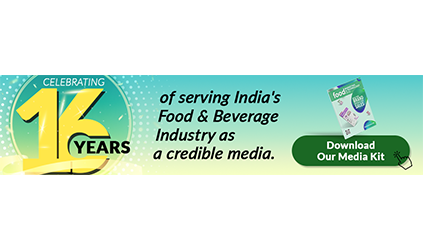Whey is a major by-product of the dairy industry, obtained during cheese and casein production. It is a watery, thin liquid that remains after milk coagulation and curd separation, either by the rennet enzyme or acid precipitation. This yellowish-green liquid has been used for thousands of years. It was first observed when calves’ stomachs were used for the storage and transportation of milk. The naturally occurring rennet enzyme caused coagulation, which led to the separation of whey and curds. Today, whey is considered a major by-product, particularly from the cheese industry. Large-scale industries produce approximately 200 million metric tonnes of whey each year.
Despite its high production volume and potential applications, whey remains underutilized due to challenges in handling, packaging, and limited awareness of its broader applications. While it is used in some industries—including infant formulas, baked products, soups and snacks, livestock, and pet feed—its complete potential remains largely untapped. However, with technological advancements and growing interest from scientists and researchers, the horizon of whey utilization is steadily expanding. Depending on processing conditions, several products can be derived from whey, such as whey permeate powder, dry sweet whey, reduced lactose whey, whey protein phospholipid concentrate, and others. Among these, whey protein isolate (WPI) and whey protein concentrate (WPC) are the most popular products, especially among people who are conscious about their protein intake. The primary difference lies in their protein quantity—WPC contains 35–80% protein, while WPI usually contains about 90%, resulting in higher protein yield per serving. These whey products have gained popularity among fitness-conscious individuals owing to their nutritional value, making them a staple protein source for athletes and the bodybuilding community. The Indian market for whey protein products is growing rapidly and is currently valued at several million dollars. This demand is met not only by domestic production but also through imports from countries like the United States, Europe, and New Zealand.
Advancing whey processing: Although the market is rapidly growing, driven by its nutritional significance, several challenges still limit the utilization of whey and whey products. One of the primary challenges is the high lactose content that makes the powders highly hygroscopic. This hygroscopic nature further complicates handling, packaging, and processing of whey powders. The physico-chemical and structural properties of whey powder lead to rapid moisture absorption, caking, and reduced flowability. These challenges incur significant time and cost, hence restricting its large-scale application. Such issues can be addressed with scientific approaches and equipment design optimization. Firstly, developing a scientific understanding of the rheological properties of high-lactose whey powder could provide more information about its caking, flowability, and powder cohesiveness, leading to better processing techniques for whey powder development. Additionally, equipment designs can be further optimized to minimize moisture absorption, enhance the handling of these powders, and improve packaging and processing efficiency. Another effective method could be the modification of lactose content as well as its structure. This can be effectively achieved by optimizing drying conditions and applying enzymatic treatments, which will ultimately reduce the hygroscopic nature of the product. Simultaneously, using anticaking agents and moisture-resistant packaging materials will further help in preventing clumping, improving powder flowability, and preserving quality and shelf life. Lastly, promoting innovation in drying techniques, especially spray drying, can improve the overall physical properties of high-lactose whey powders and reduce moisture retention, addressing the challenges associated with its processing and application.

Economic potential: Since whey processing involves high production and storage costs, economic factors play a crucial role. Price fluctuations in the global dairy market, strongly influenced by supply chains, seasonal milk production, and national and international trade regulations, affect the accessibility and affordability of whey products. Currently, whey and whey products are not economically utilized to their full potential. The global demand for WPI and WPC has drastically surged owing to their nutritional value and significant market expansion in areas such as health supplements, sports nutrition, and functional food development. The dairy industry’s ability to exploit the potential of whey and its products through innovative processing technologies not only contributes to economic value but also promotes sustainability through waste reduction. This will certainly lay the foundation for increased profitability, wider product application, new market penetration, and global market reach, enhancing both food and associated industries.
Conclusion: At one point, whey was considered just a by-product of the dairy industry. However, with scientific attention and growing nutritional awareness, it is now emerging as a valuable ingredient possessing biological and nutritional value. The prospects for whey utilization continue to expand with evolving innovation in technology, generating new horizons and enhancing sustainability in both the food and dairy industries. With a special focus on efficient processing techniques, the food and dairy sector can now utilize this largely available by-product to its maximum potential, contributing to food and nutrition security as well as economic and environmental goals. By rethinking whey’s potential, the dairy industry can not only optimize its by-product usage but also foster a new wave of economic growth and sustainability.
Dr. Ayushi Kapoor
Postdoctoral Research Associate
University of Wisconsin-Madison
USA
Dr. Ayushi Kapoor, a Postdoctoral Research Associate at University of Wisconsin-Madison, specializes in dairy lipid and whey processing, membrane-based separation processes, and predictive modeling, aiming to advance dairy ingredient processing through innovative research and industrial solutions.



